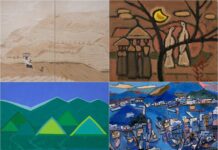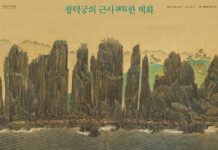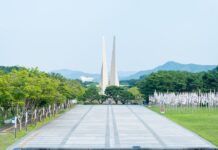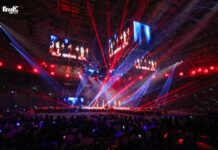
The National Folk Museum of Korea in Seoul displays items used by Koreans from the 17th to the 20th centuries to ward off the summer heat. (Yang Seon-ah)
By Lee Jihae
How did Koreans back in the day endure the heat when the country lacked air conditioners or refrigerators?
“Korean Traditional Daily Life,” a permanent exhibition at the National Folk Museum of Korea in Seoul’s Jongno-gu District, answers this question.
This display shows the daily lives of Koreans in the late Joseon Dynasty from the 17th to the 20th centuries.
The exhibition reflects the transition of daily life by season and changes its content to reflect the season.
Korea.net on July 6 visited the museum to see how Koreans during that period adapted to summer.
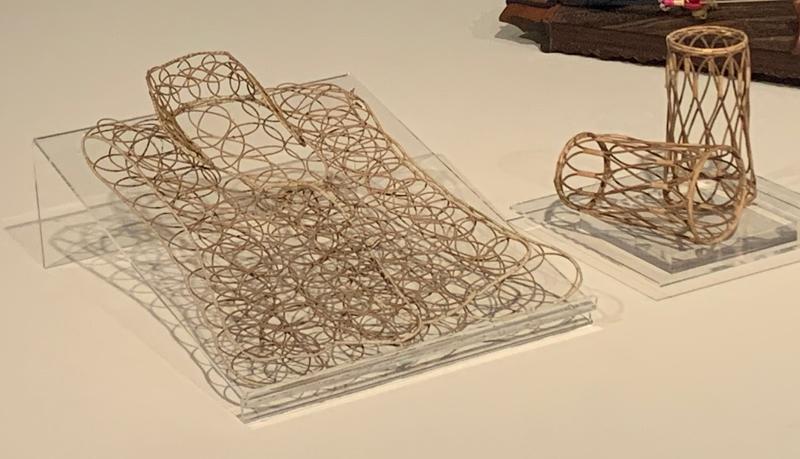
Deungdeunggeori (collar wisteria) was worn in summer so that the wearer’s clothes had no direct contact with the skin. Deungtoshi (wristlet) was worn around the arm so that the latter did not come in direct contact with clothes. (Yang Seon-ah)
Men in summer wore a deungdeunggeori, which resembles a vest. They wore it like an undergarment to prevent their sweat from drenching their clothes. Wearing the accessory formed a space separating clothes and skin to allow air to pass through.
The wristlet deungtoshi is similar to deungdeunggeori but is worn on the arm like a bracelet. Both accessories were made by drying, thinly splitting and tying the shrub wisteria.
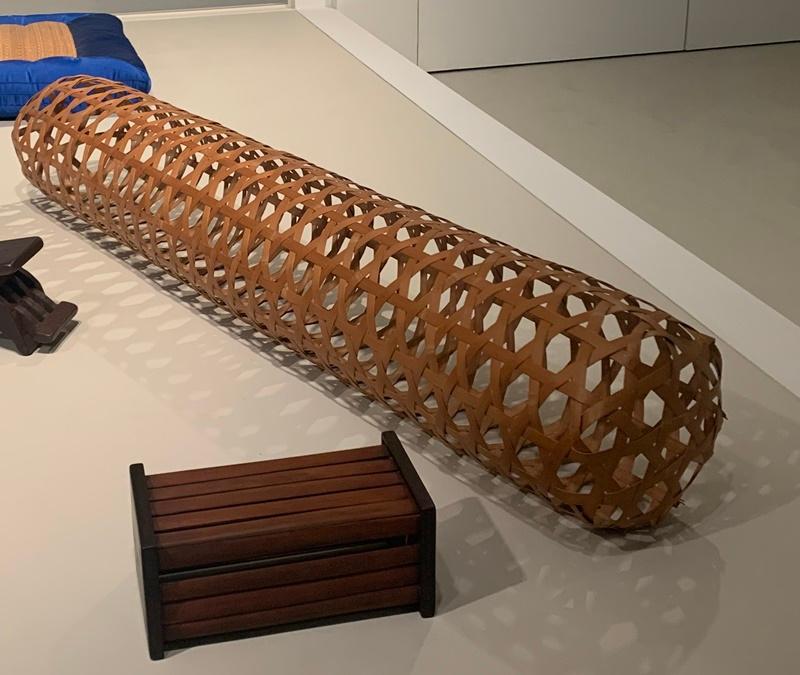
Jukbuin, a bamboo body pillow, was used in the summer to ward off heat. It was made by splitting bamboo into pieces to weave them into a long cylinder and loosening them enough for the wind to pass through. (Yang Seon-ah)
Jukbuin, a bamboo body pillow, was used in the summer to ward off heat. It was made by splitting the bamboo into pieces to weave them into a long cylinder and loosening them enough for the wind to pass through. The interior was empty and the exterior had hexagon holes through which the wind passed. People could get better sleep in the hot summer if they hugged the pillow while sleeping.
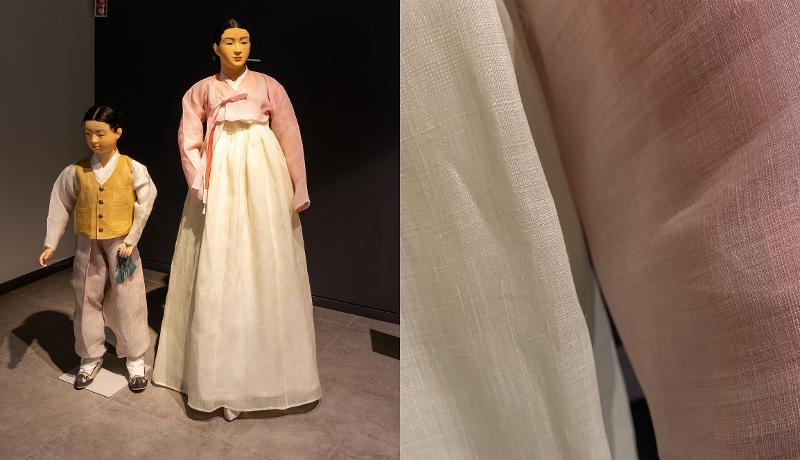
A mother and a child wear ramie clothing from the late Joseon Dynasty. The fabric allows the clothes to breathe. (Yang Seon-ah)
Summer clothes were usually made of either a shrub ramie or hemp. Perfect for summer, the fabric had outstanding durability and allowed the wind to pass through. Ramie clothes were made only in certain regions including the provinces of Chungcheong-do and Jeolla-do. The ramie made in Hansan-myeon Township of Chungcheongnam-do Province was highly popular to the point that it was more expensive than silk and was used to make clothes for the upper class.
Ramie clothes are very thin and cool, as the closely stitched fabric breathes to allow the wearer to cool off.
The Joseon Dynasty’s upper class usually wore ramie clothes in summer, while the lower class wore hemp clothes. Hemp clothes are made from the bast fiber in hemp bark. Unlike ramie, hemp was cultivatable nationwide, and hemp clothes also have thicker and rougher strands.
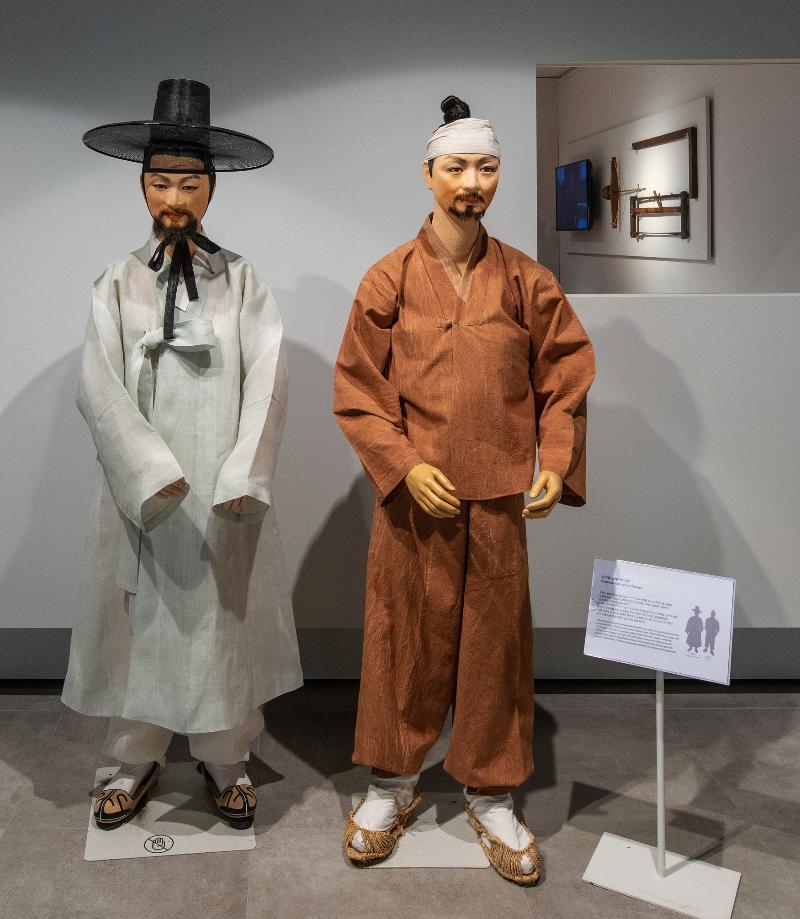
An upper-class Joseon Dynasty scholar (left) is shown next to a farmer wearing galot, which is dyed from unripened persimmon on Jeju Island. (National Folk Museum of Korea)
In summer, farmers on Jeju Island wore the indigenous outfit galot. The clothing was dyed with juice from unripened persimmon and worn as either a work uniform and or everyday clothing. The fabric readily breathes, is waterproof and protects against ultraviolet rays. Because sweat, dust or grass does not stick to it, galot was widely worn.
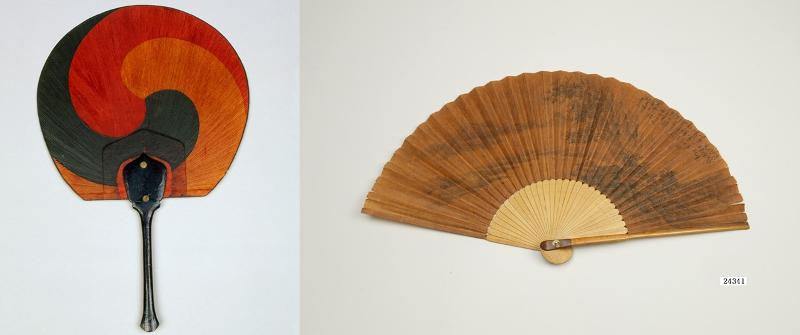
Bangubuchae (left) is a square ball fan and jeopbuchae (right) is a folding fan. (National Folk Museum of Korea)
No discussion of summer items is complete without fans, a hand tool to stir and make wind. An unfoldable, flat and round fan was called danseon or bangubuchae.
Foldable fans were called hapjukseon or julbuchae. They were made by sticking together thinly cut bamboo slices and making fan ribs. The main material was the traditional paper Hanji, which is highly light and durable.
Fans also indicated the user’s social status in the Joseon Dynasty (1392-1910). The higher the number of fan ribs, the higher the status. Fans with lacquered ribs were used only by dangsanggwan, high-ranking government officials, or those above that status.
The exhibition is open from 9 a.m. to 6 p.m. on weekdays, and from 9 a.m. to 7 p.m. on weekends and national holidays. Admission is free but online reservations are required.
jihlee08@korea.kr


